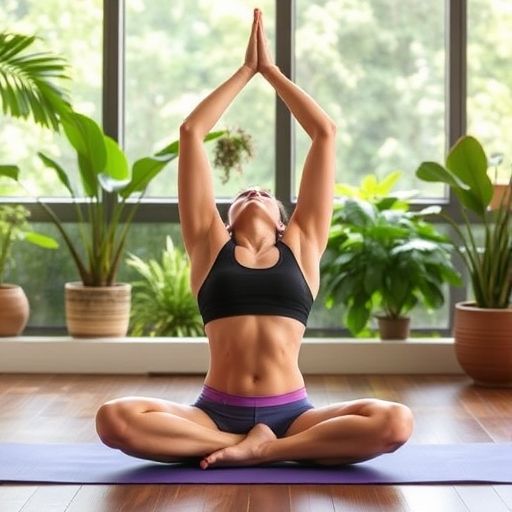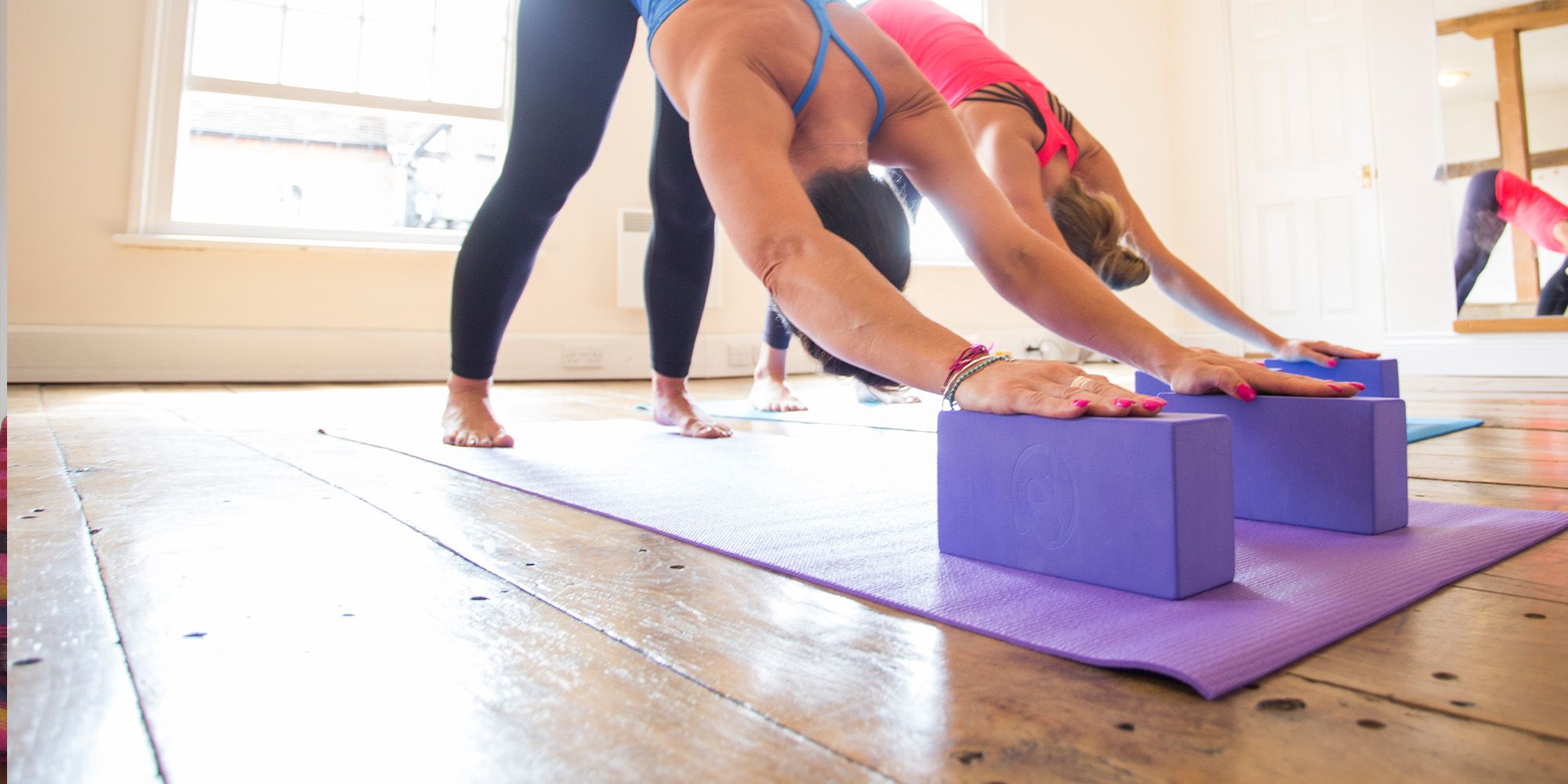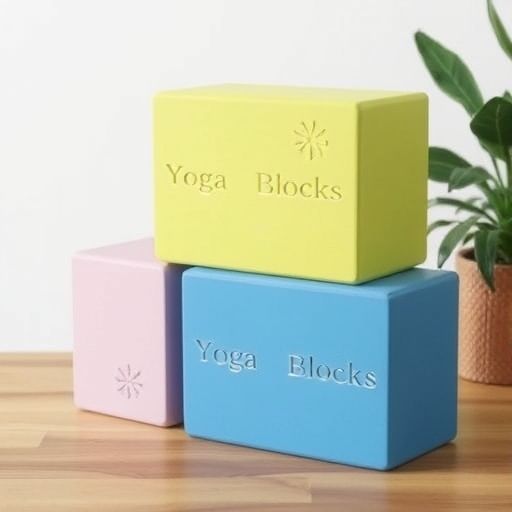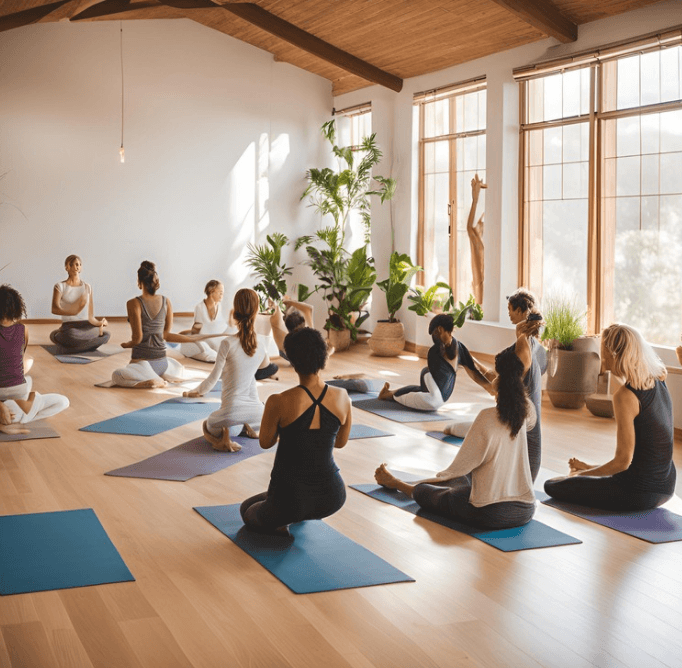Posts (page 7)
-
 3 min readYoga is more than just a physical exercise; it’s a holistic practice that significantly benefits the nervous system. With a combination of physical postures, breathing techniques, and meditation, yoga can soothe stress, improve focus
3 min readYoga is more than just a physical exercise; it’s a holistic practice that significantly benefits the nervous system. With a combination of physical postures, breathing techniques, and meditation, yoga can soothe stress, improve focus
-
 3 min readYoga blocks are versatile tools that can help deepen stretches, improve alignment, and provide support during yoga poses. If you’re looking to stretch your back, incorporating yoga blocks into your routine can enhance flexibility and relieve tension.
3 min readYoga blocks are versatile tools that can help deepen stretches, improve alignment, and provide support during yoga poses. If you’re looking to stretch your back, incorporating yoga blocks into your routine can enhance flexibility and relieve tension.
-
 3 min readWhen it comes to youth soccer, one of the most common questions parents and coaches ask is: What size ball should be used for U8 soccer players? Understanding the correct ball size is essential for ensuring that young players can improve
3 min readWhen it comes to youth soccer, one of the most common questions parents and coaches ask is: What size ball should be used for U8 soccer players? Understanding the correct ball size is essential for ensuring that young players can improve
-
 3 min readThe Adidas Size 3 soccer ball is a popular choice for young soccer players, especially those under the age of 8. Whether you're purchasing your child’s first soccer ball or upgrading their gear, the Adidas Size 3 ball is designed for optimal performance, comfort, and durability.
3 min readThe Adidas Size 3 soccer ball is a popular choice for young soccer players, especially those under the age of 8. Whether you're purchasing your child’s first soccer ball or upgrading their gear, the Adidas Size 3 ball is designed for optimal performance, comfort, and durability.
-
 3 min readSoccer balls come in various sizes and designs, catering to different age groups and skill levels. If you’ve been shopping for a soccer ball size 3 and are intrigued by the vibrant orange color, you’re in the right place.
3 min readSoccer balls come in various sizes and designs, catering to different age groups and skill levels. If you’ve been shopping for a soccer ball size 3 and are intrigued by the vibrant orange color, you’re in the right place.
-
 3 min readWhen it comes to training or introducing young players to soccer, the Puma Size 3 soccer ball is a reliable choice. Known for its quality, durability, and design, this soccer ball is perfect for kids and beginners.
3 min readWhen it comes to training or introducing young players to soccer, the Puma Size 3 soccer ball is a reliable choice. Known for its quality, durability, and design, this soccer ball is perfect for kids and beginners.
-
 3 min readChoosing the right soccer ball for young players is essential for their development and enjoyment of the game. For U6 players, the size of the ball plays a crucial role in helping them learn fundamental skills like dribbling, passing, and shooting.
3 min readChoosing the right soccer ball for young players is essential for their development and enjoyment of the game. For U6 players, the size of the ball plays a crucial role in helping them learn fundamental skills like dribbling, passing, and shooting.
-
 3 min readYoga blocks are a versatile and essential tool for yogis of all levels. Whether you're just starting your journey or are an experienced practitioner, yoga blocks can help improve flexibility, deepen your poses, and enhance your overall practice.
3 min readYoga blocks are a versatile and essential tool for yogis of all levels. Whether you're just starting your journey or are an experienced practitioner, yoga blocks can help improve flexibility, deepen your poses, and enhance your overall practice.
-
 4 min readYoga is more than just exercise—it's a holistic practice that harmonizes the body, mind, and spirit. For beginners, starting with the 12 basic yoga poses, often referred to as the foundation of yoga practice, is an excellent way to build strength, flexibility
4 min readYoga is more than just exercise—it's a holistic practice that harmonizes the body, mind, and spirit. For beginners, starting with the 12 basic yoga poses, often referred to as the foundation of yoga practice, is an excellent way to build strength, flexibility
-
 3 min readBack pain is a common issue that affects people of all ages. While there are many causes of back pain, including poor posture, injury, and muscle strain, yoga can be an effective way to alleviate and prevent discomfort.
3 min readBack pain is a common issue that affects people of all ages. While there are many causes of back pain, including poor posture, injury, and muscle strain, yoga can be an effective way to alleviate and prevent discomfort.
-
 4 min readYoga is not only a practice for mental and spiritual well-being but also a highly effective method for physical fitness and weight loss. Through consistent practice, certain yoga asanas can help you burn calories, build muscle
4 min readYoga is not only a practice for mental and spiritual well-being but also a highly effective method for physical fitness and weight loss. Through consistent practice, certain yoga asanas can help you burn calories, build muscle
-
 3 min readAcidity, a common ailment characterized by heartburn and a burning sensation in the stomach, can be quite uncomfortable. While medication can provide relief, incorporating certain yoga asanas into your daily routine can help manage
3 min readAcidity, a common ailment characterized by heartburn and a burning sensation in the stomach, can be quite uncomfortable. While medication can provide relief, incorporating certain yoga asanas into your daily routine can help manage